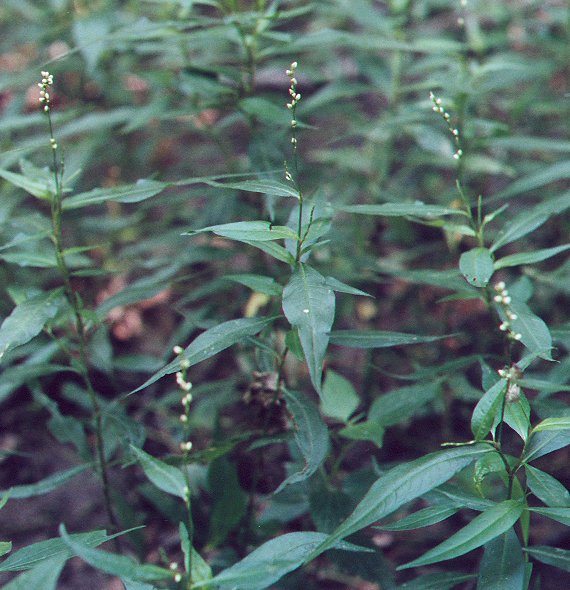Persicaria hydropiper (L.) Delarbre
Water Pepper

Native
CC = 3
CW = -5
MOC = 38
© DETenaglia
Persicaria hydropiper (L.) DelarbreWater Pepper | |
 |
Native CC = 3 CW = -5 MOC = 38 |
© DETenaglia |
|
Family - Polygonaceae Stems - To 1m tall, herbaceous, glabrous or with some pubescence above, typically green or reddish, erect to spreading, multiple or single from base, simple to few-branching. Leaves - Alternate, short-petiolate or subsessile, lanceolate to linear-oblong, glabrous, acuminate. Ocrea with ciliate bristles on margin, glabrous to scabrous.
Inflorescence - Terminal and axillary racemes, loosely arranged, often nodding at tip.
Flowers - Perianth parts to 4mm long, punctate, greenish below, whitish near apex. Stamens +/-6, included. Styles 2, included. Achene 3-angled, partially exserted at maturity.
Flowering - May - November. Habitat - Moist to wet areas. Origin - Native to Eurasia. Other info< - This plant is abundant along edges of ponds, lakes, and ditches. The roots are thin and fibrous as the plant is an annual. The species name means "water pepper" as the plant can have a peppery taste if eaten. That same peppery taste will also cause your mouth to burn and swell, so don't eat it. Photographs taken at the Parkville Nature Sanctuary, Platte County, MO., 8-15-00 and in the Ozark Scenic Riverways, Shannon County, MO., 9-20-03. |